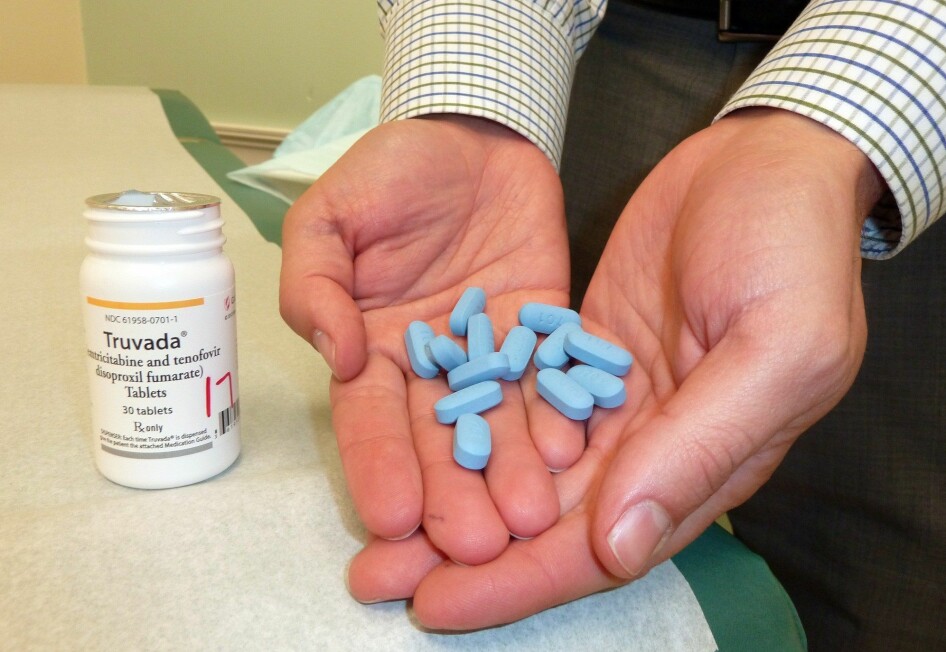
Nine per cent of Norwegians newly diagnosed with HIV have viruses with resistant mutations
Researchers have recently released the sixth annual Resistance against antivirals in Norway report. 2018 saw no cases of resistant viruses for influenza, hepatitis B or Herpes, but 9 per cent of newly diagnosed HIV cases had viruses with resistant mutations.
Antibiotic resistance is a big challenge that has grown worse in recent years. Some bacterial infections have become much more difficult to treat.
But viruses can also become resistant to medication, although this is less common.
Researchers have recently released the sixth annual Resistance against antivirals in Norway report (the RAVN report). This includes what is known about drug resistance in viruses such as influenza virus, hepatitis B, herpes and HIV.
While there were no cases in 2018 of resistant virus infection for the first three viruses listed above, 9 per cent of newly diagnosed HIV cases had viruses with resistant mutations, according to the report.
Medications can still work
But even though a virus carries resistant mutations in its genes, it doesn't necessarily mean that HIV drugs don't work if you have the virus, says Anne-Marte Bakken Kran.
She is a senior consultant at the Norwegian Institute of Public Health (FHI) and is head of Norway’s effort to monitor what is called antiviral resistance.
“For some drugs, a single mutation may be enough to cause resistance, but for others there have to be multiple mutations to make it significant,” she says.
"Fortunately, there are many different treatment regimens to choose from, so in practice we have good options even for patients who are diagnosed with a virus with reduced sensitivity to one of the drugs," she says.
And the drugs that the viruses are resistant to are not the ones that people with HIV are usually treated with, she says.
Keeping an eye on resistant HIV viruses
Researchers are monitoring closely how the HIV virus develops with respect to drug resistance.
To do this, they keep track of genetic changes in the virus and look for mutations they know are related to resistance to viral drugs.
There is always a danger that there will be more resistance, Bakken Kran says.
But resistance to HIV drugs has been fairly stable, although the percentage of viruses with resistance mutations has increased slightly.
This may be because fewer people were infected with HIV in 2018 than in the past, and because fewer tests are being examined, the researchers think.
For that reason, the researchers are reluctant to come to any specific conclusions. But they do say that there might be a small increase in the proportion of resistant HIV viruses among people who have been infected.

Why resistance to HIV drugs?
The biggest risk for HIV viruses to develop resistance to drugs is that patients don’t take their medication properly, says Bakken Kran.
For example, people may forget a dose or just take the medication occasionally.
“This increases the risk of developing a resistant virus, which in turn can be transmitted to others. That’s one of the reasons why we monitor this. It gives us the ability to follow developments and possibly implement measures if we see an increase over time,” she says.
Some of the measures include changes in treatment recommendations, avoiding drugs where the virus has shown increasing resistance, or using more drugs where the virus needs more mutations before becoming resistant.
“And of course it’s important to organize and adapt the treatment to each individual patient to make the treatment easier for him or her,” Bakken Kran says.
Resistant influenza virus
All flu viruses have become resistant to drugs called adamantanes.
Tamiflu, the flu medicine that is in current use, contains oseltamivir as its active ingredient. However, this ingredient has been criticized for not working well enough.
There is also the danger that influenza viruses will eventually become resistant to Tamiflu, the researchers say.
Influenza drugs are not the same as flu vaccines. While the vaccines prepare the immune system to withstand the virus, viral drugs make the virus less able to copy itself in the infected person’s body.
Tamiflu is most important for patients who are so ill that they have been hospitalized, and for influenza sufferers who are at risk of having a very serious case of the illness. But everyone who gets sick from the flu can get flu medicine.
Last year, 3571 people in Norway were given at least one Tamiflu prescription. This number has been on the rise since 2014, except for slightly higher numbers in 2016.
The numbers are probably linked to several different factors each season, the researchers say: the strength and prevalence of the flu, how well the vaccine worked that year and how many who took the vaccine, according to the report.
Currently, Tamiflu is the only flu medicine available in many countries, including in Norway. But there is hope that new, suitable medicines will come to Europe next year.
One of the candidates is a pill that the company itself claims can stop the virus within 24 hours. This medication however, sold as Xofluza, has already come under scrutiny for creating mutations of the flu virus resistant to drugs.

Tamiflu resistance found in Norway
Antiviral flu medicines are very important, the researchers say. Karoline Bragstad, department director for the influenza department at the Norwegian Institute of Public Health, has written about influenza virus resistance in the new report.
This summer, she and other researchers at FHI and the University of Oslo published a study on cases of resistant influenza viruses in Norway in 2016.
In routine flu virus surveillance, where doctors across the country submit samples for testing, the researchers discovered that three per cent of the tested viruses were resistant to Tamiflu.
Those three per cent made up 37 per cent of the influenza drug resistance found that season in Europe.
The researchers emphasized in the study that it is important to monitor this development and that alternatives to Tamiflu are needed.
But in 2018, no cases of resistant influenza virus were detected, according to the new RAVN report.
Need new flu medication
Bragstad and the other researchers behind the study published this summer believe it is worrying that they found so much resistance.
They emphasize that it’s important to have medicines— both during regular flu seasons and in the event of a pandemic.
Medications can limit the spread of viruses, help people get better faster, and prevent people from dying from the flu.
And the risk that flu viruses can become resistant to existing flu medicine is quite real.
“This is exactly why it is very good news that there are now several different drugs on the way, and that hopefully will soon be available in Europe,” Bakken Kran says.
Drug combinations might help
The use of several new drugs in combination may help prevent viruses from becoming resistant.
This is the approach used in the treatment of HIV, hepatitis C and tuberculosis,” Bakken Kran says.
“It’s also important that we monitor the development of resistance, both in Norway and internationally, she says.
The Norwegian Institute of Public Health will also continue to monitor the HIV virus. One of the things researchers will be studying in the future is how the drug treatment PrEP affects the virus's resistance.
HIV medicine under surveillance
PrEP is a preventative medicine that people who do not have HIV can take to protect themselves from being infected by the virus.
Norwegian health authorities have approved PrEP for people at risk, who in turn can get the medicine for free.
Many people thought that PrEP would increase the risk of resistance, but there is currently no indication that this is the case.
“Maybe we’ll see that using PrEP reduces the number of new cases to such an extent that there is actually less resistance?” Bakken Kran says. "This is something the resistance surveys in the future should be able to address.”a
References:
I. Litleskare et al.: Usage of Antivirals and the Occurrence of Antiviral Resistance in Norway 2018. Rapport from RAVN, Norwegian Institute for Public Health, 2019.
K. Bragstad et al: Community spread and late season increased incidence of oseltamivir‐resistant influenza A(H1N1) viruses in Norway 2016. Influenza and Other Respiratory Viruses, July 2019.
———


































